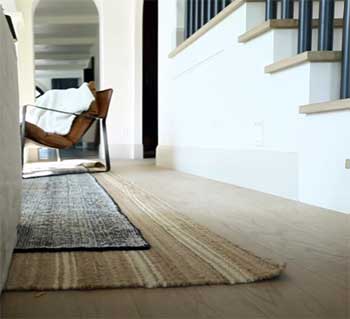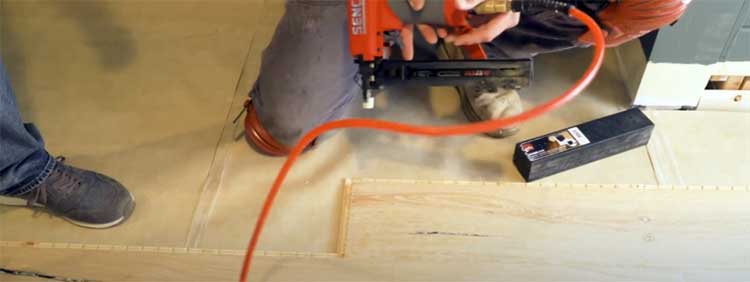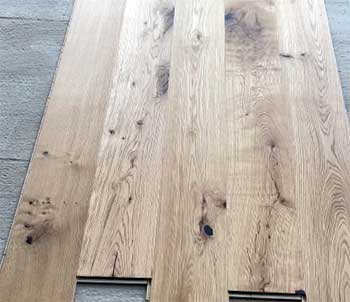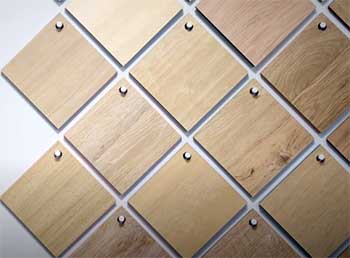Picture this: you’re transforming your home, and the floors you choose become the heartbeat of every room. After months of research, countless samples, and real-world testing in my own space, I’m convinced Stuga flooring is the way to go.
Its Scandinavian-inspired engineered hardwood blends jaw-dropping beauty with resilience that stands up to kids, pets, and life’s chaos. Whether you’re renovating or building from scratch, Stuga’s sustainable, high-quality planks promise a foundation you’ll love for decades.
Trust me, this is one investment you won’t regret.
My Journey With Stuga Flooring

When my husband and I bought our fixer-upper in 2019, the floors were a nightmare—creaky, scratched, and screaming for replacement.
I wanted something that felt warm, looked stunning, and could handle our toddler, two cats, and my clumsy coffee spills.
Enter Stuga.
I stumbled across their website after a friend raved about their Scandinavian aesthetic, and I was hooked.
Their promise of durable, eco-friendly engineered hardwood felt like the answer to my prayers.
We ordered samples of their Ingrid, Shell, and Fika floors, and let me tell you, holding those planks felt like touching nature itself. The grain, the texture—it was love at first sight.
We settled on Ingrid for its neutral, not-too-warm, not-too-cool vibe that seemed to play nice with every light in our home. Installation was a breeze, thanks to Stuga’s click-lock system, which we floated over our concrete subfloor.
No glue, no fuss, just my husband and me puzzling it together over a weekend. The result? A living room that feels like a cozy Scandinavian cabin, even in the middle of suburbia.
Living with Stuga for six years now has been a revelation. The floors have endured muddy boots, dropped toys, and even a rogue marker incident from my kid. Scratches?
Sure, there are a few, but they blend into the oiled finish like they’re part of the story. I’ve walked barefoot across these planks every morning, and the tactile warmth of the wood makes me smile every time.
Plus, knowing they’re sustainably sourced and free of toxic glues makes me feel like I’m doing right by my family and the planet.
What Makes Stuga Flooring Stand Out?

- Unmatched Aesthetic Appeal
Let’s talk looks because, wow, Stuga nails it. Their floors, crafted from European white oak, have this organic, sun-bleached charm that screams Scandinavian simplicity.
Whether you pick a blonde like Fika or a richer brown like Harbor, the grain patterns and subtle knots add character without overwhelming your space.
I’ve had friends over who can’t stop complimenting the Ingrid’s neutral glow—it’s like the floors are the room’s best supporting actor, elevating every piece of furniture without stealing the show.
- Durability That Laughs at Chaos
If you’ve got kids, pets, or a knack for dropping things (guilty!), durability is non-negotiable. Stuga’s engineered hardwood is built like a tank, with a thick oak wear layer that can take a beating.
My cats have tried their best to claw it up, and my toddler’s toy car races haven’t left a dent. The three-layer construction, with a pine core, keeps the planks stable through humidity swings—perfect for my drafty old house.
Stuga claims their floors can last 100 years, and after six years of abuse, I believe them.
- Eco-Friendly and Health-Conscious
I’m a bit of a stickler for non-toxic materials, especially with a kid who’s always crawling around. Stuga’s commitment to sustainability and clean manufacturing won me over.
Their floors are made with solvent-free finishes and certified for low emissions, so I don’t worry about off-gassing. The fact that their Swedish factory is carbon-negative and recycles wood waste into biofuel? That’s the kind of planet-friendly ethos I can get behind.
- Easy Installation for DIY Warriors
I’m no contractor, but Stuga’s click-lock system made me feel like one. We chose the floating installation, which was perfect for our DIY skills and concrete subfloor.
The planks snapped together like Legos, and we didn’t need to hire a pro. Stuga offers glue or staple options too, so you’ve got flexibility whether you’re a weekend warrior or working with a crew. The included stair nosings were a godsend for our staircase, giving it a sleek, modern edge.
The Flip Side: Where Stuga Falls Short?

- Higher Price Point
I’ll be honest—Stuga isn’t the cheapest option out there. At around $8-$10 per square foot, it’s pricier than some budget engineered hardwoods or vinyl planks. When we were budgeting for our reno, I winced at the total.
But after comparing it to other premium brands, I realized you’re paying for quality—sustainable materials, durable construction, and that Scandinavian flair. If you’re on a tight budget, you might need to save up or opt for their more affordable lines like Cortado.
- Maintenance Commitment
The oiled finish on my Ingrid floors is gorgeous, but it’s not a “set it and forget it” deal. Stuga recommends oiling once a year to keep the wood hydrated, and I’ll admit, I’ve skipped a year or two.
When I did, the floors looked a bit dry, though they still held up fine. If you’re not into occasional maintenance, their urethane-finished options might be a better fit, but even those need regular cleaning to stay pristine.
- Limited Color Range
While I adore Stuga’s curated palette, it’s not as expansive as some competitors. If you’re hunting for bold, trendy colors or exotic wood species, you might find their selection a bit restrained.
They focus on timeless tones—blondes, tans, and browns—which worked perfectly for my neutral-loving heart but might not satisfy someone craving a dramatic gray or ebony finish.
- Potential for Minor Imperfections
During installation, we noticed a couple of planks with slightly damaged locking edges. Stuga’s customer service was quick to replace them, but it was a minor hiccup.
Also, the natural oil finish can patina over time, especially in sunny spots. I noticed a faint line where a rug used to sit, but I actually like the lived-in look. If you’re a perfectionist, this might bug you, though it’s easy to fix with a touch-up oil.
Keeping Your Stuga Floors Looking Fabulous
- Daily Cleaning: Keep It Simple
I’m not one for high-maintenance anything, so I love that Stuga floors are easy to clean. A quick sweep with a soft-bristle broom handles crumbs and cat hair like a champ.
For deeper cleaning, I use a damp mop with Stuga’s recommended floor cleaner—nothing harsh, just a gentle, water-based solution. Pro tip: never let water sit on the wood. I learned that the hard way after a spilled glass left a faint mark (easily fixed with a quick oil touch-up).
- Annual Oiling for Oiled Finishes
If you go for an oiled finish like I did, plan to oil your floors once a year. It sounds daunting, but it’s not. I use Stuga’s Satin Oil, apply it with a microfiber cloth, and let it soak in overnight.
It’s like giving your floors a spa day—they come out looking richer and more vibrant. I’ve found that skipping this step for too long can make the wood look dull, especially in high-traffic areas like my kitchen.
- Handling Scratches and Dents
Scratches happen, especially with pets and kids. The beauty of Stuga’s oiled finish is that minor scratches blend into the wood’s natural patina. For deeper ones, I dab on a bit of maintenance oil, and they fade like magic.
Dents are rare, thanks to the thick wear layer, but if you drop something heavy, you might need to replace a plank. Stuga’s click-lock system makes this surprisingly easy—just pop out the damaged board and snap in a new one.
- Protecting Against Sunlight
Sunlight can lighten oiled floors over time, which I actually find charming. But if you want to keep the color consistent, use rugs or curtains to diffuse direct sunlight. I rotate my rugs every few months to avoid stark lines, and it’s worked like a charm.
For urethane-finished floors, UV-resistant coatings help, but you’ll still want to be mindful of prolonged exposure.
- Using the Right Underlayment
Stuga’s a stickler for using their approved underlayments, and I get why. We used their Nature All-In-One Underlayment for our floating installation, and it’s kept the floors stable and quiet.
It’s especially important if you’re installing over radiant heat (which Stuga handles beautifully). Skimp on this, and you might void the warranty or deal with creaky floors—nobody wants that.
My Real-Life Experience: Living With Stuga

Fast forward to year six, and my Stuga floors are still the star of our home. The Ingrid planks in our living room catch the morning light in a way that makes me pause my coffee run just to admire them.
In the kitchen, they’ve survived countless spills—wine, spaghetti sauce, you name it—with just a quick wipe. The oiled finish has developed a subtle patina, like a favorite leather jacket, and I love how it tells the story of our life here.
One surprise? How quiet the floors are. Thanks to the underlayment and tight click-lock joints, there’s no creaking, even in our high-traffic hallway. The only time I noticed wear was in the entryway, where constant foot traffic left the finish looking a bit thirsty.
A quick oil application brought it back to life. I’ve also used Stuga’s stair nosings for our staircase, and they’ve held up beautifully against my kid’s daily stampedes.
The sustainability factor keeps me smiling, too. Knowing our floors are GreenGuard Gold certified and made in a carbon-negative factory feels like a small win for the planet.
And let’s talk compliments—every guest who walks in gushes over the floors. They’re not just flooring; they’re a vibe, a mood, a whole lifestyle.
Tips For Choosing Your Stuga Floor
Picking the right Stuga floor can feel overwhelming, but it’s all about matching your lifestyle. If you’ve got a busy household, go for a rustic option like Shell or Faye—the knots and grain hide scratches better.
For a sleek, modern look, Fika or Moonlight are your jam. Order large samples to see the planks in your lighting; trust me, it makes a difference. And don’t skip the underlayment—it’s the unsung hero of a stable, quiet floor.
If you’re debating finishes, oiled floors like mine need a bit more TLC but feel more natural. Urethane finishes are lower maintenance but less forgiving with scratches. Either way, Stuga’s website has a killer comparison tool to help you visualize.
And if you’re installing over radiant heat, double-check compatibility—most Stuga floors are good to go.
Addressing Common Concerns
Some folks worry about Stuga’s price, but I see it as a long-term investment. These floors aren’t just pretty; they’re built to outlast trends and tantrums. Others fret about installation, but even DIY newbies like me found it manageable.
If you’re nervous, Stuga’s customer support is legit—they walked us through a tricky transition piece issue with patience and clarity.
Why Stuga Feels Like Home?
After living with Stuga for years, I can’t imagine my home without it. The floors have become part of our family’s story—every scratch, every spill, every barefoot morning. They’re not perfect, but neither are we, and that’s what makes them so special.
The durability, the eco-conscious design, the sheer beauty—it all adds up to a floor that feels like it was made for us.
How Stuga Stacks Up Against the Competition?
- Stuga Vs. Royal Home Flooring

Let me tell you about Royal Home Flooring, which I considered when shopping for a budget-friendly option. Priced at around $5-$7 per square foot, Royal Home’s engineered hardwood is tempting, especially for its wide range of colors, from smoky grays to deep walnuts.
Their planks are solid, with a decent wear layer, but I noticed their finishes lean glossy, which can highlight scratches more than Stuga’s matte, oiled look. Royal Home’s manufacturing isn’t as eco-focused, and I couldn’t find certifications for low emissions like Stuga’s GreenGuard Gold.
For my family, Stuga’s sustainability and natural aesthetic trumped Royal Home’s affordability, but if you’re after variety on a budget, Royal Home’s worth a look.
- Stuga Vs. Kahrs Flooring

Since Stuga is a rebrand of Kahrs, I had to dig into how they compare.
Kahrs, priced at $10-$12 per square foot, offers a broader palette, including bold stains like cherry or espresso, which Stuga skips for its minimalist vibe.
Both share Swedish craftsmanship and eco-friendly practices, like carbon-negative production.
Kahrs’ wear layers (up to 3.5mm) are thicker, ideal for heavy refinishing, but Stuga’s 1.5mm-2mm layers suit most homes just fine.
Stuga’s direct-to-consumer model keeps costs lower, making it the smarter pick for the same premium quality unless you need Kahrs’ niche colors.
- Stuga Vs. Karndean Flooring

Karndean’s luxury vinyl planks, priced at $4-$8 per square foot, caught my eye for their waterproof promise and stone-look options.
They’re perfect for bathrooms or basements, and the click-lock installation is DIY-friendly like Stuga’s.
But vinyl, even high-end stuff, lacks the warmth of Stuga’s oak.
Karndean’s designs are crisp, but they can feel sterile compared to Stuga’s organic grain. Plus, vinyl can’t be refinished like Stuga’s engineered hardwood.
If you prioritize waterproofing over natural wood, Karndean’s a contender, but for me, Stuga’s soulful durability wins.
Frequently Asked Questions (FAQ)
Stuga flooring is crafted in Sweden, partnering with top-tier manufacturers like Kahrs. Their factories prioritize sustainability, using solvent-free finishes and recycling wood waste into biofuel. It’s Scandinavian craftsmanship at its finest, built to last a lifetime.
Durability depends on your needs, but Stuga’s Hardened Wood range, like High Five and Giddy Up, is among the toughest. Waterproof, scratch-resistant, and 3-5 times stronger than traditional hardwoods, they’re ideal for busy homes. For non-wood options, luxury vinyl planks like COREtec are also super durable.
Yes, Stuga floors are engineered hardwood, featuring a three-layer construction with a solid oak wear layer, a pine core, and a backing layer. This design ensures stability, resists humidity changes, and allows for refinishing, unlike laminate or vinyl.
Stuga’s Hardened Wood collection, including floors like High Five and Cartwheel, is fully waterproof, perfect for kitchens or bathrooms. Their standard engineered hardwood isn’t waterproof but handles spills well with proper care, thanks to water-resistant finishes.
Why Stuga Flooring Is Worth Every Penny?
I’ve lived with Stuga floors for six years, and they’ve transformed my home into a warm, timeless sanctuary. From their eco-friendly roots to their ability to withstand my chaotic household, these floors deliver on every front.
If you want a floor that’s as beautiful as it is resilient, Stuga’s your answer. Go ahead, order those samples—you’ll thank me when you’re dancing barefoot across your new floors.
